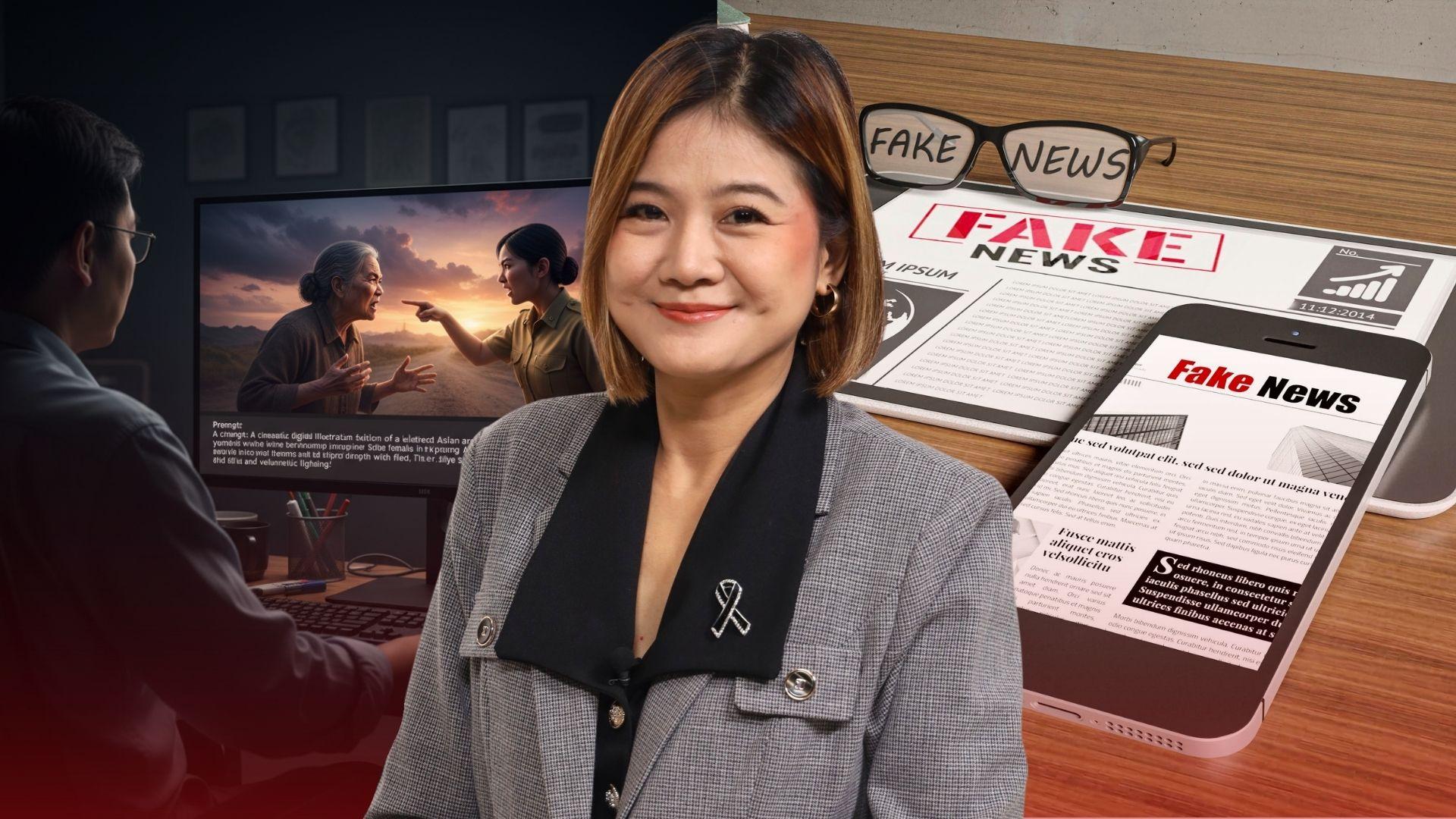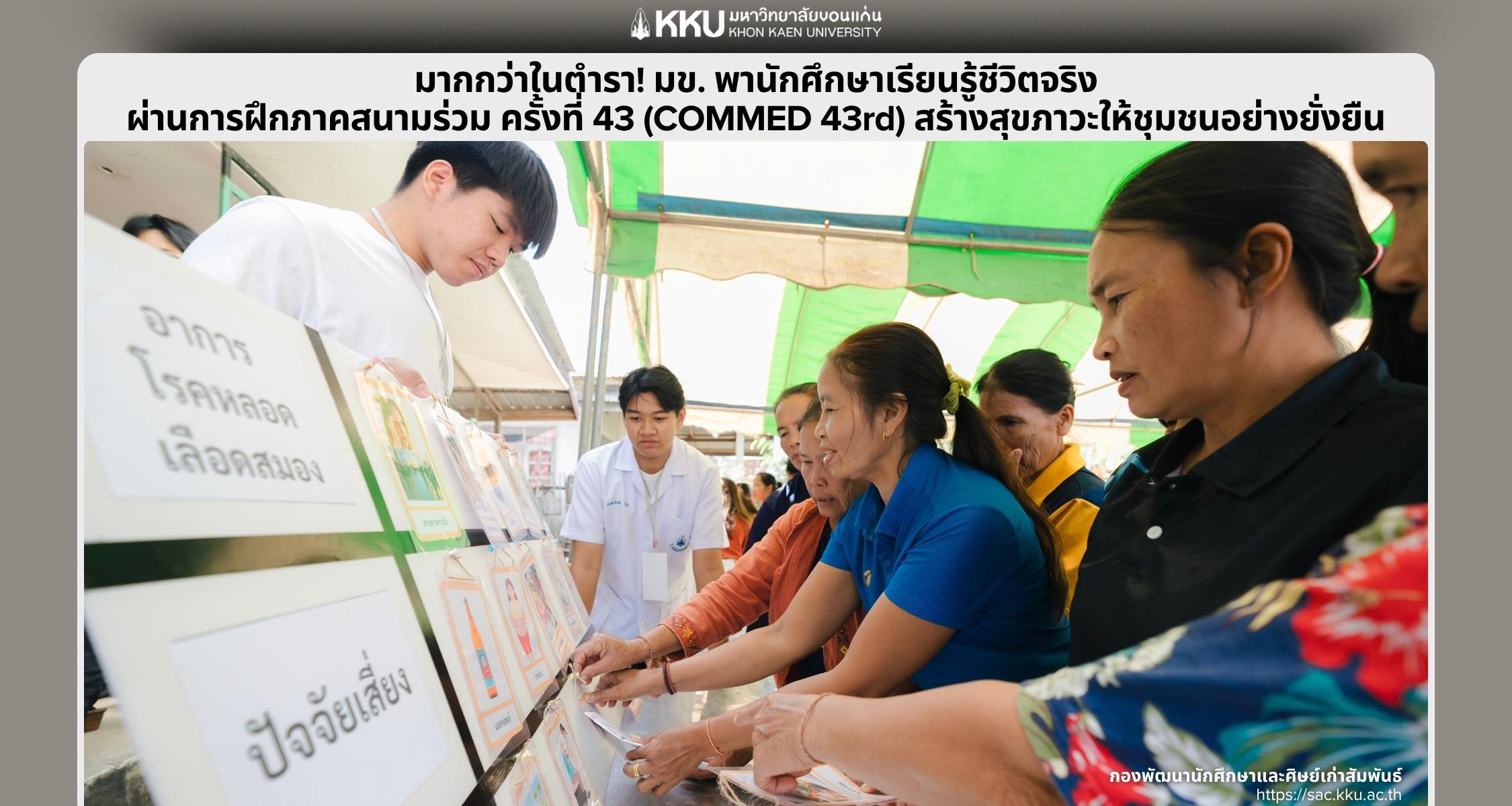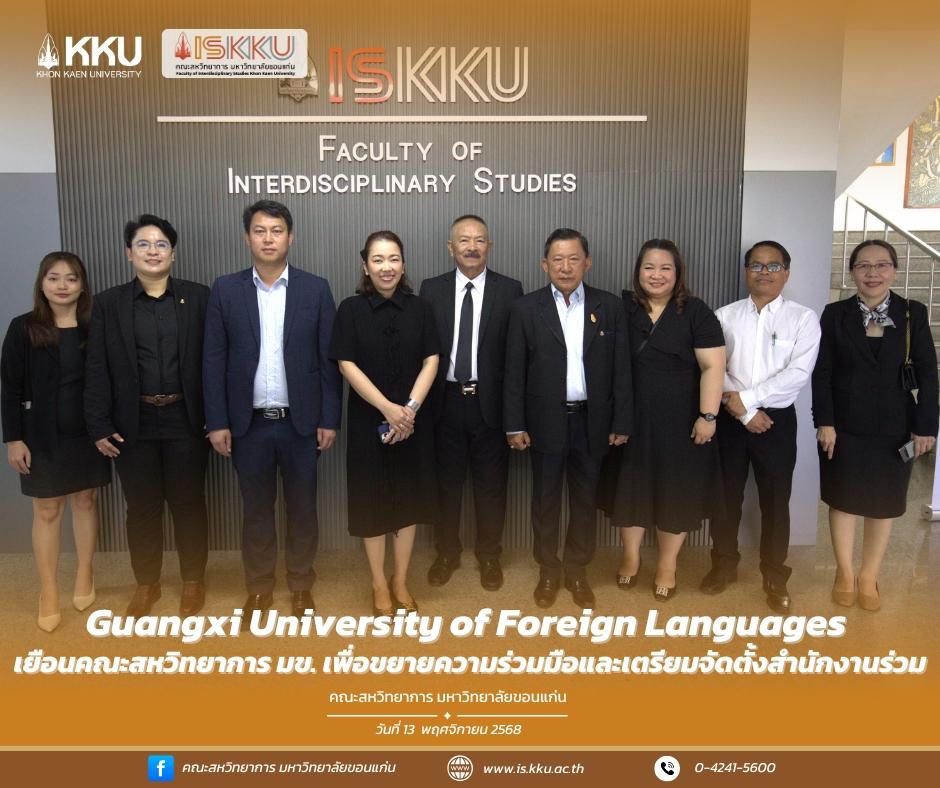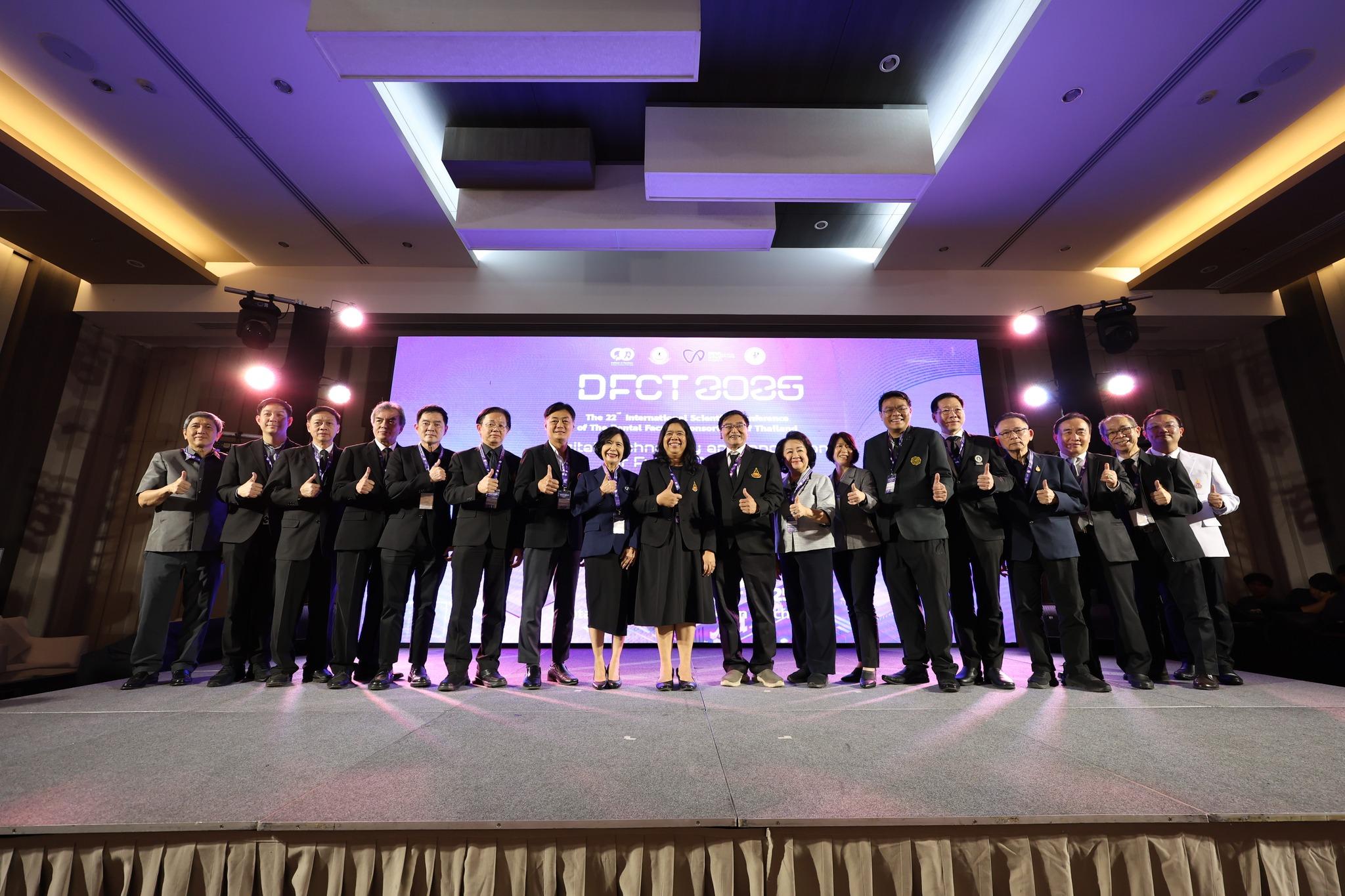“The clip of a woman scolding an official” rapidly went viral across social media, much like “the clip of a man carrying an elephant in the middle of a road.” These examples, which were widely shared on social media and even featured in news reports, highlight the proximity of AI-generated fake news to everyone—available through a mere phone screen and a fingertip. Today (14 November 2025), Khon Kaen University (KKU) invited scrutiny of the escalating AI fake news phenomenon with Dr. Wanwisa Wannapipat, Lecturer in the Bachelor of Communication Arts Programme in Creative Media Technology (CMT) at Khon Kaen University International College.
Research data indicates that the incidence of fake news has soared by 400% over the past two to three years. AI is considered a major variable driving this phenomenon due to three key factors: (1) technology is becoming increasingly accessible and user-friendly; (2) AI is continuously improving its quality to produce highly realistic content; and (3) the shift from traditional to new media, where receivers can also become senders, leads to the widespread dissemination of fabricated information.

Dr. Wanwisa posits that contemporary fake news is no longer just textual content; instead, it is a process of data flow that significantly impacts message recipients. This is particularly concerning with AI image generation, which takes less than a minute to create numerous highly customised and realistic images. This realism severely compounds the problem. Furthermore, anyone can now create AI videos, which, coupled with personalised AI (Personalized AI), deeply engages the recipient and is rapidly developing the capacity to deceive all five human senses. This type of fake news can also be mass-produced (Mass Production), allowing a single sender to proliferate the content infinitely, reaching hundreds or thousands of others.
Why Do People Still Believe AI-Generated Fake News?
Viewing the issue through the lens of communication theory, Dr. Wanwisa explains that traditional communication involved a linear relationship between the sender, the medium, and the recipient. The advent of social media transformed this into a circular relationship, allowing recipients to become senders themselves. This change enables AI-generated fake news to reach people quickly and easily.
From a psychological perspective, AI fake news is creating cognitive shortcuts for recipients. As the realism of AI escalates, human suspicion decreases, leading to immediate sharing decisions. This explains why “the clip of a woman scolding an official” or “the clip of a man carrying an elephant in the middle of a road” became viral sensations, shared tens of thousands of times.

Four Techniques to Spot AI Fake News: Embracing ‘Stop, Doubt, Verify’ Before Sharing
Dr. Wanwisa recommends four preliminary techniques for spotting AI fake news, particularly in fabricated videos and images:
- Observe the eyes of the person in the clip. If there is a lack of natural expression or ‘sparkle’ (lifeless eyes), it may be AI-generated.
- Note unnatural movements of the hands, feet, and hair.
- Look for abnormal lip movements or synchronisation issues.
- Check text within the clip or image for possible spelling errors, switched letters, or an abnormally distorted font style.
While these observations are effective currently, Dr. Wanwisa cautions that technological advancement means these four indicators may become highly realistic within the next three to five years as AI receives further training.
In addition to these four observations, Dr. Wanwisa stressed the importance of practising “Stop, Doubt, Verify” when encountering media. Firstly, one must stop and refrain from immediate sharing. Secondly, approach the content with doubt or scepticism. Lastly, verify the content using available tools, or, simply put, ask those around you to help check whether the information is AI-generated fake news. She highlighted that scammers often use AI to create fabricated information alongside deceptive calls-to-action that manipulate human emotions such as fear, interest, or greed. Therefore, these three concepts are crucial for mitigating the dangers of AI fake news.

How Will AI Technology Impact Society in the Next Three to Five Years?
Dr. Wanwisa anticipates that the advancement of AI technology will inevitably affect society. In the field of education, the impact will be positive, as students will benefit from more efficient learning and training. Similarly, in mass communication, technology will play a vital role in effectively disseminating news and reaching a wider audience.

Conversely, misinformation will become increasingly severe. In the future, it is possible that AI-generated fake news will be utilised as a tool for political and economic manipulation both domestically and internationally. However, she believes that counter-technologies designed to verify fake news will also be developed. Thus, the future will likely feature Verified Media, allowing the public to select accurate information. Concurrently, agencies and news organisations will increase their efforts to scrutinise AI-generated content, mirroring the current movement of organisations checking for ordinary fake news.
“Previously, we had tools to check for plagiarism or data copying. Now, we also have tools to verify if information is copied or created by AI, which can be easily found online,” Dr. Wanwisa stated. “Therefore, the key lies in the awareness and digital literacy of the user. Check thoroughly before you share, ensuring everyone can safely navigate this era of AI-generated fake news.”

In conclusion, Dr. Wanwisa reiterated that Khon Kaen University is an educational institution that constantly adapts its curriculum to the changing times. Specifically, the courses she oversees—Digital Information Literacy, Digital Technology Communication, and Advanced Multimedia Production—have been updated to incorporate AI tools for creating images, videos, and academic writing. This aims to train students in media production skills while simultaneously instilling the ethics of AI use and communication ethics. This approach cultivates a new generation of high-quality individuals, ethical media creators, and digitally literate citizens equipped with strong technological skills, including AI proficiency, to succeed in the present and future workforce.

บทความ : ผานิต ฆาตนาค
ภาพ : ณัฐวุฒิ จารุวงศ์








